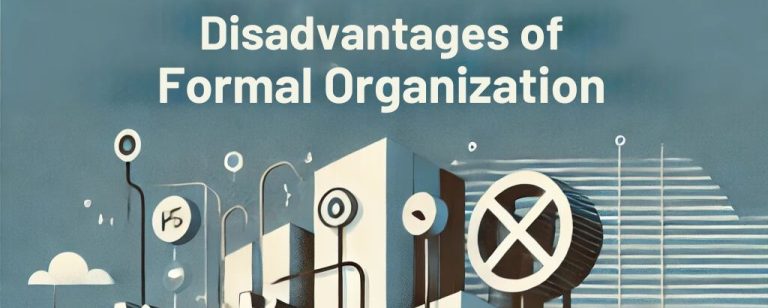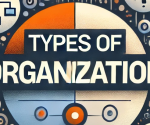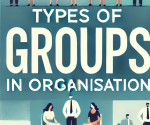Formal organization are a backbone for businesses and institutions across the globe. Although they provide structure and efficiency, there are certain disadvantages of formal organization. The disadvantages of formal organization are essential to understand in order to identify the challenges that come up within the structured systems. This article explores these disadvantages in depth, including their impact on workplace culture, decision-making processes, and employee productivity. By understanding these drawbacks, businesses can adapt and improve their processes, creating a more flexible and efficient work environment. This article delves deep into these disadvantages, providing insights into how organizations can balance structure with adaptability for better performance.
Meaning of Formal Organisation
A formal organization is an officially defined structure in a business or institution, which assigns tasks, roles, and responsibilities based on a set of rules and policies. The structure usuallyMajor actions are typically subject to systematized decision-making; that is, higher levels of authority supervise and approve important decisions.
Characteristics of Formal Organisation
Formal organizations have some characteristics that separate them from informal ones. These characteristics are essential in providing an organization with structure, clarity, and efficiency.
- Clear Hierarchy: A formal organization has a well-defined hierarchical structure. Every individual’s role and authority are specified, and there is a clear chain of command.
- Rules and regulations: Formal organizations operate based on defined rules, regulations, and policies. The observance of the rules is ensured to maintain order and consistency.
- Fixed Authority: In a formal organization, the authority is clearly defined and well based on a position held in an organizational structure. This removes confusion regarding which authority gives orders.
Disadvantages of Formal Organization
Formal organizations seek to ensure a clear division of labor, maintain control, and increase efficiency in achieving business objectives. Though formal organizations have many advantages, they also have their own set of disadvantages. Knowing the disadvantages of formal organization is essential for organizations to know where they can improve and adjust to the situation.
Lack of Flexibility
Probably, the least advantage of a formal organization is the structure’s inflexibility.
- Whereas by structure, rigid rules, and preconceived set-down procedures, employees can find it quite hard to adapt to change quickly or face the unanticipated.
- It will make the process of making a decision take time, resulting in missing an opportunity or even failing to address a change that comes in the market.
Slow decision-making process
Formal organizations usually have a hierarchical structure, which often leads to delays in decision-making.
- Decisions have to be approved by higher authorities, which can prolong the response time. In fast-paced industries or during urgent situations, this slow decision-making process can be really detrimental.
- The workers are frustrated whenever there is the necessity to get higher approvals and are constantly cross-questioned by upper-level management for any decision made by them.
Reduced Creativity
In a formal organization, the structure and strict definitions of roles stifle creativity.
- An employee in such organizations will have very few chances to develop innovative ideas for tasks they may be working on.
- Lack of freedom often retards the potential creativity of the employees and further limits new solutions to problems.
- Creativity has become a necessary tool in the dynamic business environment of today. r enhance.
Poor Communication
Formal organizational communication follows prescribed channels, whereas informal communication often gets hampered between employees or departments.
- It inhibits the communication process and misunderstandings may often occur due to the gap of communication.
- In some instances, official communication may lead to the employees finding it difficult to communicate their ideas or concerns.
Alienation of Employees
In a formal organization, employees may experience disconnection or alienation because the environment is not personal.
- Task and role-focused strictness could lead to less personal connection among employees, being treated as just numbers rather than people.
- This alienation can impact the morale and job satisfaction of the employees. As workers become only instruction followers without feeling a part of anything, they may experience a really sharp decline in both productivity and engagement.
Resistance to Change
Formal organizations are resistant to change because of their structured nature.
- Employees are often accustomed to the existing systems and processes, which makes them less open to adopting new methods or strategies.
- Resistance to change is a common problem that arises when an organization’s policies and structure are rigid.
Bureaucracy and Red Tape
Formal organizations are bureaucratic, meaning they have a lot of layers of management and multiple approval processes.
- This bureaucracy leads to inefficiency because employees must go through so many steps before decisions are made or actions are taken. Paperwork and approvals create red tape, which delays processes.
- Employees may get frustrated owing to the procedures and thus see a decline in both motivation and satisfaction at work. Bureaucracy promotes the chances for miscommunication, or errors which are associated with complex processes.
Limited Career Opportunities
In formal organizations, the hierarchical structure often makes it difficult for employees to grow or move up within the organization.
- With limited opportunities for advancement, employees may become demotivated and seek opportunities elsewhere. This lack of career growth can result in high employee turnover, which affects the stability of the organization.
- Employees may also perceive that they cannot move upwards as the structure is too rigid where promotions or sideway movement happens based on time served and not performance.
Examples of Formal Organisation
Formal organizations abound in almost all sectors, whether it is multi-national companies or government agencies. Some formal organizations include corporations
- Large enterprises: Apple, Microsoft, and Google function within formal organizations.
- Government Bodies. Formal organizations form governments at every national, regional, and local level.
- Higher Educational Institutions, Schooling, and University: Clear defined roles from the faculty of a school towards staff and toward the board administration.
Disadvantages of Formal Organization FAQs
What are the disadvantages of formal organization?
Formal organizations have several drawbacks, such as inflexibility, slow decision-making, and poor communication.
Can formal organizations encourage creativity?
Formal organizations may hinder creativity because they are rigid and have predefined roles.
What is the impact of bureaucracy on formal organizations?
Bureaucracy in formal organizations introduces inefficiencies. There is a proliferation of levels and administrative procedures, which delays decision-making and constitutes red tape and the potential for missed chances or delays.
What are formal organizations?
Formal organizations include large corporations, government bodies, and other educational institutions.
Formal organization is appropriate for all businesses?
Formal organizations provide structure and efficiency. However, in dynamic industries, such a setup might not be very suitable because it lacks flexibility, rapid decision-making, and innovation.


